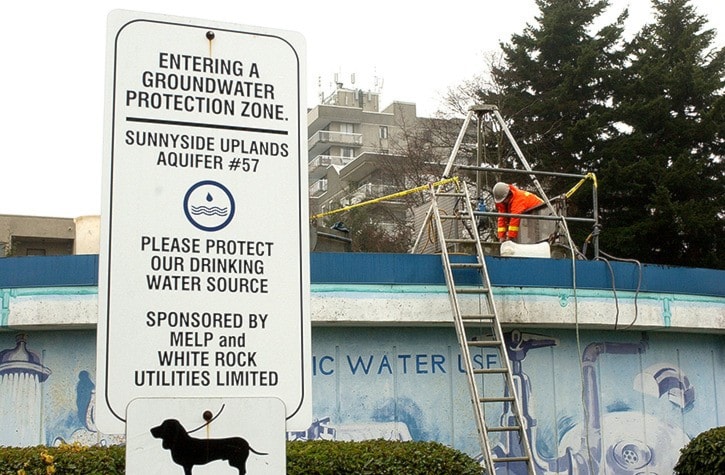White Rock residents are calling on the city to rethink its plans to treat the water with chloramine, citing concerns ranging from health and environmental dangers to potential infrastructure damage.
The decision to use chloramine – a mix of chlorine and ammonia – to disinfect the city’s water supply was announced in December, and immediately met with concern from residents.
Citing negative health effects, environmental concerns and potential hazards to infrastructure such as plumbing pipes and fixtures, a group of citizens are planning to rally at city hall Monday afternoon to protest the decision.
David Riley, director of the Little Campbell Watershed Society, told Peace Arch News Thursday he felt the city’s plans to chloraminate the water is “the biggest issue to hit White Rock in 40 years,” adding that it is also “hugely complicated.”
Speaking on the environmental concerns associated with its use, Riley pointed to a pilot project in South Surrey in the late 1980s, when the water of 70,000 residents was treated with chloramine, which – like chlorine – is harmful to aquatic life.
Two water-main breaks in 1989 and 1990 near Fergus Creek killed thousands of juvenile salmon.
While White Rock senior staff say mitigation processes are in place in the event of a water-main break, Riley said he is skeptical.
“We have no confidence that White Rock staff can fully mitigate the unintended consequence of what might happen,” he said, noting that residents sprinkling their lawns, washing their cars or watering their gardens will all result in chloraminated water ending up in the ocean.
In addition to environmental concerns, numerous residents have spoken up about potential negative health effects of chloramine in the water supply, concerns that Mayor Wayne Baldwin told PAN last month he did not share.
The directive to disinfect the city’s water supply came from Fraser Health in 2011, following a boil-water advisory in 2010 that came as a result of traces of E.coli in the water.
Baldwin told PAN that previous utility owners Epcor planned to use chloramine prior to the sale of the utility to the city, which took place at the end of October.
In a Jan. 5 letter to the city from Fraser Health, medical health officer Dr. Michelle Murti writes “chloramination has been safely used in a number of water systems in North America, and is an approved secondary disinfection method by Health Canada.”
Murti goes on to address additional concerns that have been raised to the health authority, including the use of chloraminated water by residents undergoing dialysis, noting “it is safe for kidney patients to drink and use…”
Regarding potential corrosion of infrastructure, Murti – who is expected to attend Monday’s White Rock council meeting to discuss the issue further – writes that chloramination can cause nitrification “if too much free ammonia is allowed to remain in the distribution system,” which can result in corrosion and degradation of pipes and fixtures.
“The amount of free ammonia, pH and water temperature impact the growth of ammonia-oxidizing bacteria, and need to be monitored closely to prevent their growth, water nitrification and subsequent corrosion and degradation of the system,” Murti writes.
While Riley acknowledged that both sides of the debate tend to point to evidence garnered from bodies like Health Canada, the Environmental Protection Agency and the World Health Organization, “the problem is that anecdotal evidence, in the absence of good science, is all we have to go on.”
Describing the issue as “so much more than highrises,” Riley – who plans to speak at Monday’s rally – encouraged all residents to get involved.
“I totally believe that everybody needs to be fully informed about the issue,” Riley said. “We need to have a really robust public debate about what’s going to be put in the water.”
